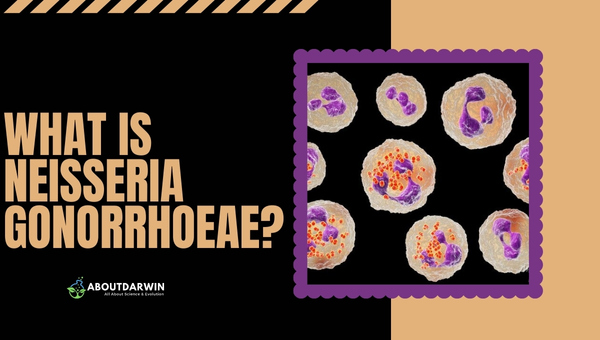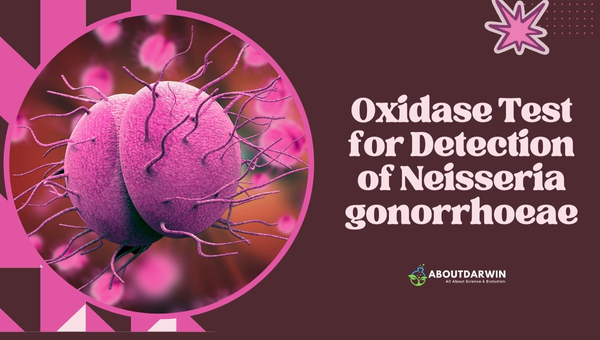Physical Address
304 North Cardinal St.
Dorchester Center, MA 02124
As I delve into the world of bacteria, one name that piques my curiosity is Neisseria gonorrhoeae. This bacterium may seem vague to most, but it plays a significant role in human health issues. Learning how to identify this microorganism using cutting-edge biochemical tests is not only fascinating but essential in our battle against bacterial diseases.
Let me guide you on an enlightening journey where we will unravel the mysteries behind Neisseria gonorrhoeae, its impact, and the various biochemical tests involved in its identification.
I assure you this voyage through microbiology will leave you better informed and maybe even a bit amazed at what these unseen life forms are capable of. Get ready; we’re about to embark on an extraordinary microscopic adventure!
Contents
Today, I’m going to give you a simplified view of this interesting bacterium and the essential tests needed for its identification.
But before we delve into these tests, let’s take a look at Neisseria gonorrhoeae’s basic characteristics to help you understand its nature.
| Basic Characteristics | Properties (Neisseria gonorrhoeae) |
|---|---|
| Hemolysis | Negative (-ve) |
| Gram Staining | Negative (-ve) |
| H2S | Negative (-ve) |
| Pigment | Negative (-ve) |
| Capsule | Negative (-ve) |
| Catalase | Positive (+ve) |
| Glucose | Positive (+ve) |
| Oxidase | Positive (+ve) |
| Nitrate Reduction | Negative (-ve) |
| Lactose | Negative (-ve) |
| Gas | Negative (-ve) |
| Shape | Diplococci |
| Maltose | Negative (-ve) |
| Mannose | Negative (-ve) |
| Fructose | Negative (-ve) |
| Sucrose | Negative (-ve) |
| DNase | Negative (-ve) |
| Fermentation of Tributyrin | Negative (-ve) |
Neisseria gonorrhoeae is a type of bacteria that we don’t generally want inside our bodies. As you might suspect from its name, it’s the culprit behind the sexually transmitted infection known as gonorrhea. Why should we care about this little bacterium? Well, it’s actually quite fascinating to learn how it operates.

The uniqueness of this bacterium lies in its sugar coat, a mesh-like structure that acts like armor to protect against our immune system’s counterattacks. This makes N. gonorrhoeae a particularly tough cookie to crack and also aids its survival in those environments where most other bacteria would struggle.
It can pack quite a punch when untreated or ignored, causing infections not just in the genitals but also potentially affecting your throat and rectum. In women particularly, if not treated right away, it could cause Pelvic Inflammatory Disease, which might lead to infertility or ectopic pregnancies down the line. It sure isn’t subtle when it comes to stating its presence!
Also Read: DNA: Differences Between Replication and Transcription
N. gonorrhoeae can turn things sour pretty quickly. Its most infamous creation is, of course, gonorrhea – a sexually transmitted infection that has been a known irritant to humans for centuries. However, the scope of its influence doesn’t stop there.
One particularly insidious characteristic of this bacteria is how stealthy it can be at times. In many cases, those infected don’t even realize something’s amiss. Statistics suggest that around 50 percent of women and 10 percent of men infected with N. gonorrhoeae show no symptoms at all! Yet the microbe continues to do damage internally.
Untreated infections can lead to long-term health problems. For women, this could mean conditions like pelvic inflammatory disease, which in extreme cases can result in infertility or life-threatening ectopic pregnancies.
Men aren’t excluded from its wrath either – untreated gonorrhea can cause painful conditions in the tubes attached to the testicles and might cause sterility if not addressed timely.
The essence of disrupting the cycle of any disease process often relies on early detection and treatment. For Neisseria gonorrhoeae, one of the most common sexually transmitted bacteria, biochemical test methods play a pivotal role in its identification and prompt treatment initiatives.
Being a medical professional with some experience in microbiology, I have employed various diagnostic techniques. One such technique is the direct microscopic examination, which is widely used to identify Neisseria gonorrhoeae.
This bacterium causes sexually transmitted infections and gonorrhea, and prompt identification aids greatly in initiating effective treatment. The examination involves the microscopic analysis of discharge samples, usually from genital sites under high magnification.
Any bacteria detected appearing as tear-drop-shaped or kidney-like organisms are suggestive of N.gonorrhoeae presence.
I must emphasize that while this method can provide quick results, it may not be 100% accurate and should ideally be followed by confirmatory tests like cultures or rapid tests for an effective diagnosis.
The process of culture technique is another reliable method I rely on in the quest for understanding Neisseria gonorrhoeae. To initiate this, I take a sample from the patient and carefully spread it on a petri dish containing a suitable growth medium. Then, this dish is incubated in an appropriate environment, promoting bacterial growth.
Culture techniques are crucial because they not only confirm the presence of Neisseria gonorrhoeae but also give me an idea about its sensitivity to different antibiotics. This helps me choose the ideal treatment for my patients, tailored to their particular infection.
Rapid test kits have become an instrumental tool in my practice, offering immediate identification of pathogens like Neisseria gonorrhoeae. These kits work by detecting antigens of the bacteria or the antibodies developed by our bodies against it. Some popular examples would include the Gonorrhea Rapid Test (cassette) and N. gonorrhoeae Antigen Detection Kit.
While these tests offer several advantages, such as short turnaround time, ease of use, and quick results, their sensitivity varies widely. Therefore, a negative impact doesn’t necessarily rule out an infection and vice versa. It’s always advisable to confirm with further sophisticated testing methods when dealing with potentially serious bacterial infections.
Let’s break down some important biochemical tests for the identification of Neisseria gonorrhoeae:
Remember, each test has its own level of sensitivity and specificity. Often, they are used collectively to detect Neisseria gonorrhoeae presence effectively.
Working in the field, I have come to value the convenience and effectiveness of biochemical tests, such as the Oxidase test for identifying Neisseria gonorrhea.

The process is initiated by placing a portion of the culture onto a paper moistened with an oxidase reagent. If it turns dark purple within 10 seconds, it suggests a positive oxidase reaction, meaning that N.gonorrhoeae may be present.
The magic behind this test lies in its ability to detect the presence of an enzyme called cytochrome c oxidase in these bacteria. This enzyme plays a crucial role in their energy production mechanism, and thus, its detection is almost synonymous with the detection of these bacteria themselves.
Many times, I have used Superoxol tests as an additional confirmation step while diagnosing infections caused by N.gonorrheoae. This test essentially measures the enzymatic activity within bacterial colonies when exposed to hydrogen peroxide or superoxide solution.
What makes this test critical is that N.gonorrhoeae, along with some other Neisseria species, shows a positive superoxide reaction characterized by instant effervescence or fizzing upon the addition of hydrogen peroxide.
Henceforth, if both Superoxol and Oxidase tests show positive reactions, especially along with suggestive symptoms, one can be pretty certain about the diagnosis being Gonorrhea caused by N.gonorrhoeae. Still, we need further conclusive proof, like DNA-based testing methods, due to its close resemblance to the commensal bacterium Neisseria meningitidis.
Also Read: Serratia Marcescens: Biochemical Test & Identification
Yes, DNA replication occurs before transcription. In the cell cycle, DNA replication takes place during the S phase of interphase, prior to the cell entering mitosis or meiosis, where transcription and subsequent protein translation can occur. This ensures that each new cell has a complete set of genetic instructions.
It’s crucial to remember that negative initial microscopy doesn’t rule out infection definitely since sensitivity may vary. In case symptoms persist or exposure history confirms risk, additional testing using culture methods or molecular techniques should be undertaken.
Neisseria gonorrhoeae is a bacterium that causes gonorrhea, a sexually transmitted disease. It primarily affects mucous membranes and can cause symptoms such as inflammation and discharge.
Neisseria gonorrhoeae can be identified through various tests, including direct microscopic examination, culture techniques, and rapid test kits.
Even if your initial test results are negative, further testing may be required to rule out false negatives or the presence of other diseases that could mimic the symptoms of this bacteria.
A positive result with an Oxidase Test would confirm that the sample contains cytochrome c oxidase enzyme associated with these bacteria, suggesting an active infection of Neisseria Gonorrhoeae.
As soon as N.gonorrhoea gets confirmed via biochemical tests, immediate intervention follows for the most effective management of infection.
Also Read: Arteries and Veins: Understanding Differences and Impacts on Health
In conclusion, the biochemical tests and identification of Neisseria gonorrhoeae are crucial for timely diagnosis and treatment of potentially dangerous infections like gonorrhea.
As I’ve shown you, there are different methods involved in this process, like direct microscopic examination, culture techniques, and modern rapid test kits. All these have their own merits and importance in arriving at an accurate diagnosis.
Furthermore, understanding how these tests work helps us appreciate the science behind disease diagnosis. It also empowers us to make informed decisions about our health care.
I hope this read has deepened your knowledge about biochemical testing methodologies for Neisseria gonorrhoeae identification. Stay curious, and stay informed!